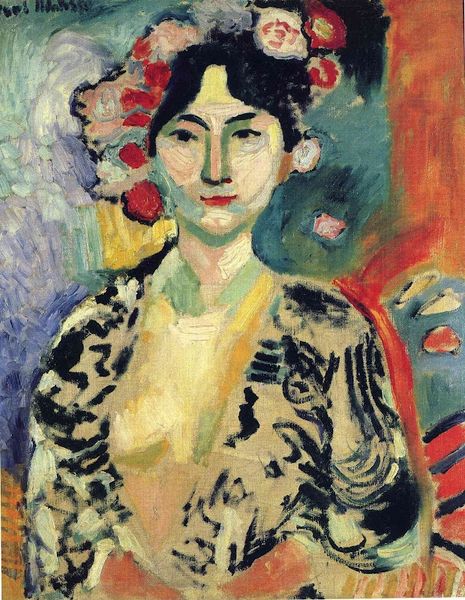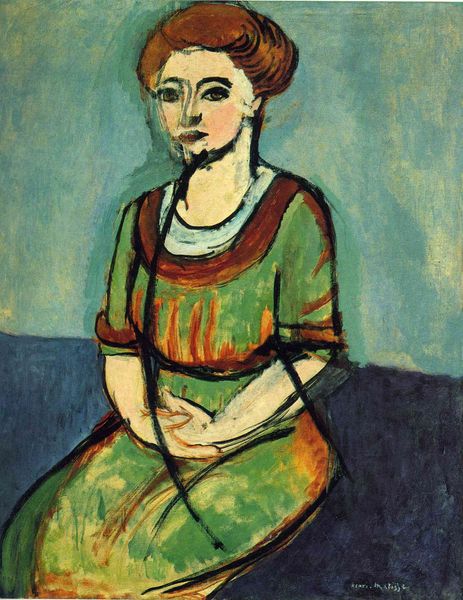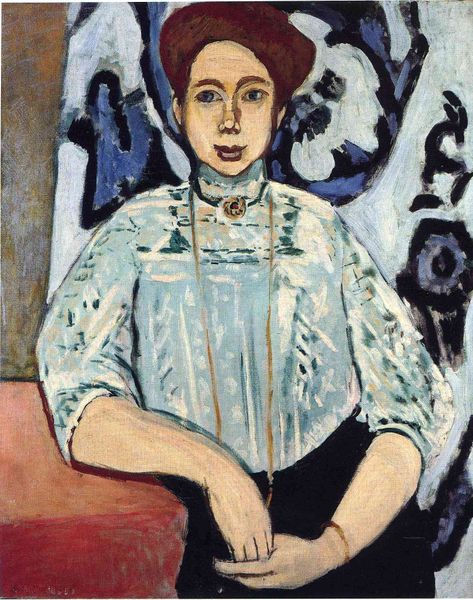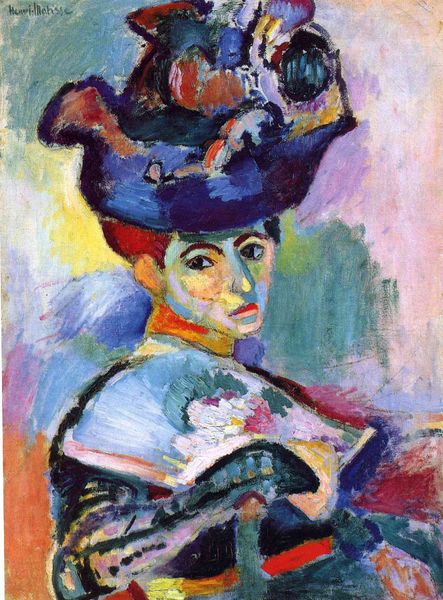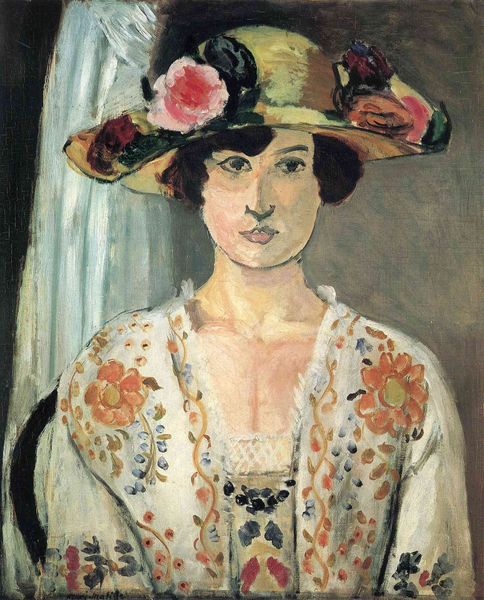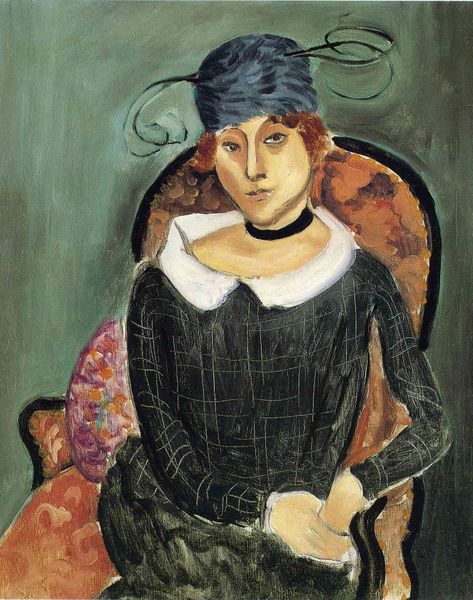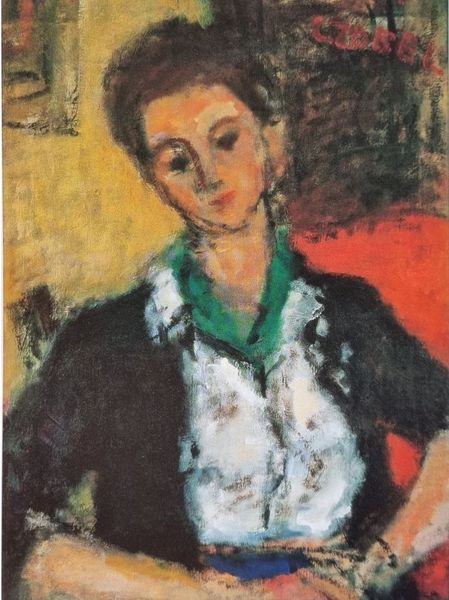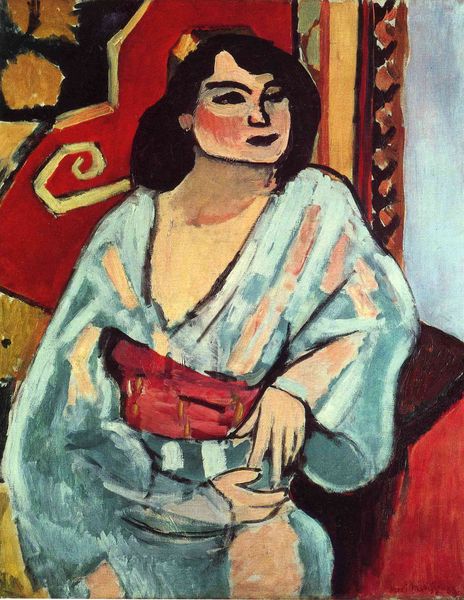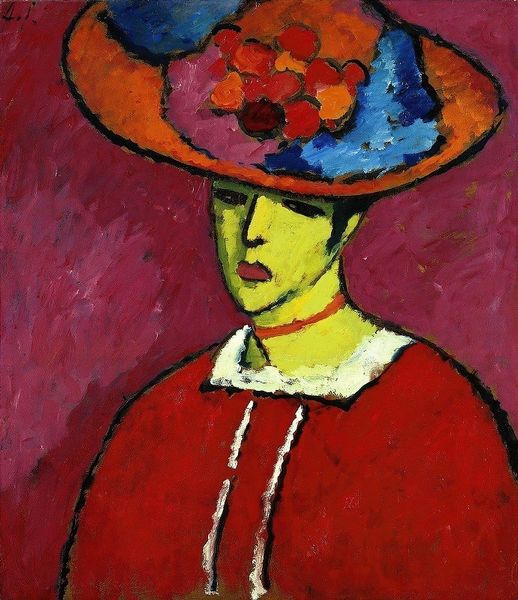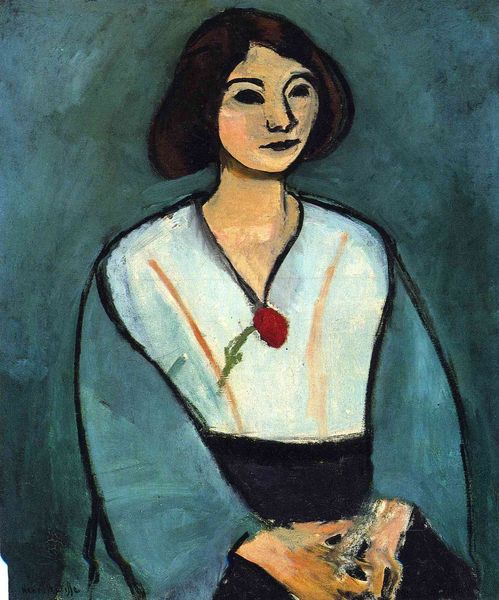
painting, oil-paint, impasto
#
portrait
#
fauvism
#
self-portrait
#
painting
#
oil-paint
#
oil painting
#
impasto
#
naive art
#
portrait art
#
modernism
Dimensions: 66 x 50.8 cm
Copyright: Public domain US
Curator: Welcome. We are standing before Henri Matisse's "The Girl with Green Eyes," painted in 1908. It’s an oil on canvas portrait exemplifying his Fauvist period. Editor: My first impression is one of bold, unapologetic color. The fiery red of the sitter's blouse clashes wonderfully with the muted greens and blues of the background. Curator: Absolutely. Look how Matisse uses color not to replicate reality, but to construct form and emotion. Notice the complementary color relationships that define the figure's face and her direct gaze, inviting the viewer to actively consider their encounter with the model's presence. Editor: Considering the period, and Matisse's revolutionary exploration of color, this work almost certainly intends to question the accepted notions of early 20th-century Parisian female portraiture. There's a confidence in the model's stance, emphasized by the expressive brushstrokes, a stark contrast to the more constrained representations we often see. Her slightly tilted head suggests an independence of spirit, as if challenging traditional gender expectations through her artistic depiction. Curator: Interesting reading. If we look at the composition closely, we observe Matisse’s flattening of the pictorial space, characteristic of Fauvism and later modernist movements. Consider the geometric construction of the background and the model’s garments; these planes seem almost collaged together. Editor: And what could those floral textile patterns and the curious crest on her blouse reveal about colonial influence or popular trends circulating in the era? It would be great to consider how those items reflect the intersectionality of commerce and artistic practice in early twentieth-century Paris. Curator: True, these details cannot be disregarded. Yet, if one pauses to examine the textured paint application closely, the way the brushstrokes capture light and shadow, one could say these features function as visual cues of expression. Ultimately, "The Girl with Green Eyes" represents Matisse's bold experimentations with color and form during the height of the Fauvist movement. Editor: Yes. It shows, above all, how Matisse pushed the boundaries of representation while providing glimpses into the sociopolitical context in which the girl—and by extension, the artist—existed. The painting provides an arena of contemplation for viewers that consider the historical dynamics embedded within this woman’s representation.
Comments
No comments
Be the first to comment and join the conversation on the ultimate creative platform.
